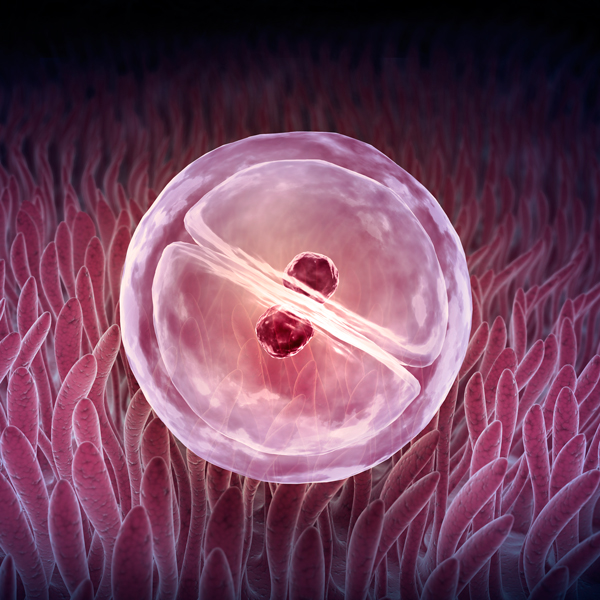
What is the ‘implantation window’ in fertility treatment?
The ‘implantation window’ is the name we give to the period of time during which the endometrium in the mother’s uterus is in an appropriate state for embryo implantation to take place.
When does the implantation window occurs?
Implantation is a critical and very precise process during which the embryo makes contact with and penetrates the endometrial tissue in the mother, making gestation possible. This takes place between days 20 and 24 of a normal 28-day menstrual cycle with ovulation happening around day 14 of that cycle.
Requirements
Embryo transfer during a cycle of assisted reproduction must take place at the optimum time in the window in order to maximise the chances of implanting the transferred embryo. In order for this to happen, both the embryo and the endometrium need to be duly prepared.
- The embryo needs to have divided its cells correctly over six days and have reached blastocyst stage, it must have be of a good enough quality and it must also be functionally and genetically normal. Its chances of implanting are at its greatest at this point.
- Endometrium, the internal layer of the maternal uterus, meanwhile, needs to be receptive so that the embryo can implant inside it. This receptivity is acquired as the menstrual cycle progresses. The endometrium thickens, and its blood vessels and its secretions increase.
Stages of embryo nesting
When both the embryo and the endometrium are ready, there needs to be efficient communication between the two in order for implantation to take place. This takes place over four phases:
- The pre-contact stage. Which begins when the blastocyst takes up an appropriate position in the endometrium.
- Apposition stage. Which takes place when the cells in the blastocyst trophectoderm cells make contact with the cells in the endometrial epithelial lining thanks to elongations of the latter known as pinopods.
- The adhesion stage. That involves molecular union between both types of cells.
- Invasion stage. During which the blastocyst invades the endometrial stroma, breaks the epithelial lining’s basal membrane separating the epithelial cells and makes contacts with the mother’s blood vessels.
From this point onwards, and for the following 9 months, the embryo develops inside the mother’s uterus thanks to the connection that was established between the two during that very early stage.
When assessing the receptivity of a patient’s uterus, it is essential to take into account a histological analysis of pinopods since they represent a morphologically fundamental marker that is only present during the implantation window. From a molecular point of view, the cytokines, the growth factors, or adhesion molecules such as the integrins would appear to play a fundamental role in correct implantation during the window period.
IT MAY ALSO BE OF INTEREST TO YOU:
- Embryo implantation bleeding
- Implantation failure and recurrent miscarriage Unit
- Reproductive Immunology
Dr Leyre Herrero, a biologist at Instituto Bernabeu
